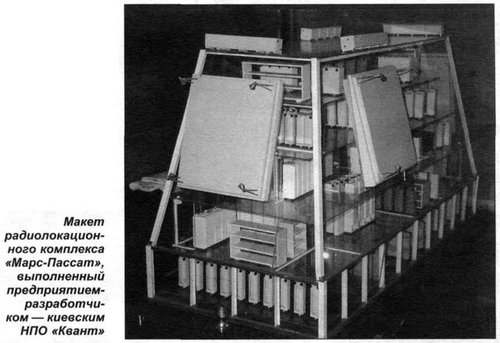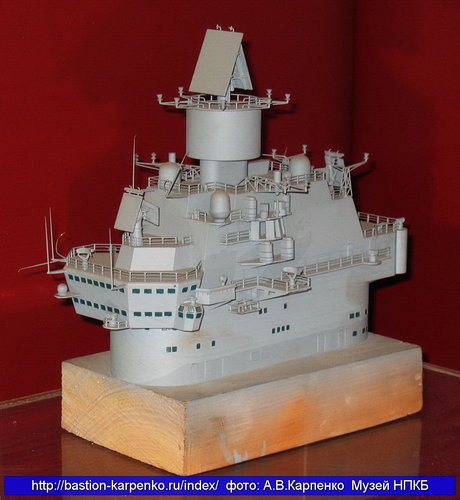26 aug 1986
Personal Top Secret
Copy #2
CENTRAL COMITEE OF COMUNIST PARTY OF UKRAINE
(to) Comrade Shcherbytsky V.V.
MEMO
About problems in creating “Mars-Passat” radar
During the process of counter intel support of Kyiv’s NPO “KVANT” of USSR’s Minsudprom (chief director comrade Stefanovich T.E., party committee secretary
/meaning plant local party cell – Anduriel/ comrade Lisytsa L.I.)
republican KGB obtained reliable data about low quality of 3D programmed /here программный обзор – program here means software program - Anduriel/ search radar (codename “Mars-Passat”) developed by NPO
and failure to meet delivery deadlines to install it on built by Black Sea Shipbuilding Plant (ChSZ, Nikolayev city)
heavy aircraft cruiser “Baku” /later – “Gorshkov ” and now known as “Vikramaditya” – Anduriel/ (order 104), which negatively impacts ship’s delivery deadlines to navy.
Development and creation of “Mars-Passat” is done on the basis of СС of CPSU and Sovmin #126-48 04.02.1975 and #635-188 05.07.1981. Approx. cost of development is 90 mil. rubles, 87 mil. was used by 01.08.1986.
May-June
testing of reduced configuration prototype (RCP) of “Mars-Passat” radar at object 614 (Izberbash city, Dagestan ASSR)
showed serious miscalculations that were made during development of a radar (machinery complex connections
/завязка машинного комплекса – I think they meant processing systems – Anduriel/, usage of a single measurer
/rangefinder? – Anduriel/ for all ESA channels which significantly complicates program-algorithmic system, choice of automatic mode as main one which with approved operator’s stations configuration can’t provide ability to work during jamming) t
hat make overall operability questionable. Additionally, because of significant differences between RCP and full configuration variant
/FCV - Anduriel/ of a radar in hardware and software test results don’t provide objective picture about “Mars-Passat” capabilities in relation to TTZ.
Based on this, State Commision suspended evaluation.
By the operative sources opinion system’s
functionality could've been checked before in NPO using Universal complex modelling system (UCMS), developed on Sovmin’s StateCom On Mil. Industry Questions order, the former of which was checked and was in working order by the time of 1st stage testing phase (December 1985).
But due to the fact that the UMCS would’ve revealed radar complex’s inoperability, it wasn’t used during the testing and in the April of 1986 was disassembled.
Several lead experts from NPO “Kvant” called attention of NPO’s management and Chief Designer (comrade Gladysh F.L.) on issues during the development of “Mars-Passat”, but these opinions were ignored by Chief Director comrade Stefanovich T.E. and Chief Engineer Tuka B.Yu. due to Chief Designer assurances of chosen development path being a correct one. Customer’s representatives in NPO “Kvant” didn’t show necessary level of tenacity in checking reliability of selected technical solutions.
Despite the factual inoperability of RCP and FCV’s low probability of function, NPO “Kvant” right now sends “Mars-Passat” systems that are not connected by software to ChSZ
/Black Sea Shipbuilding Plant – Anduriel/ and tries via Minsudprom to solve the question of installation of information and computing complex’ hardware on ship w/o completion of full volume of tests. This necessitates further refinement of it on “Baku” during latter’s running, mooring and state tests and would be extremely difficult to do. By NPO’s leading experts opinion,
refinement could take at least 1.5 -2 years, which calls into the question the timely creation of “Mars-Passat” not just for “Baku”, but for new generation carrier “Leonid Brezhnev” (order 105) /now known as “Kuznetsov” – Anduriel/, hardware for which already in production w/o necessary changes in radar functional scheme.
Due to mentioned above republican Committee
/KGB – Anduriel/ investigated version about deliberate harmful actions by specific individuals involved in development of a radar, but no data on hostile intent was found.
The reasons for the current situation are serious miscalculations in organizing the work on the topic by the leadership of the NPO (copying the foreign AEGIS station from the USA without considering the level of the domestic component base, involving insufficiently qualified managerial and regular performers in the development, weak administrative control over the progress of work, ignoring critical remarks regarding certain technical decisions made),
which are being hidden from the Ministry of the Shipbuilding Industry of the USSR and the Customer. Repeated assurances are given that the complex will be delivered for Order 104 within the established deadlines and will fulfill the tasks assigned to it.
Considering the complexity of the "Mars-Passat" system project and the novelty of the technical solutions, leading specialists from the NPO "Kvant" propose to appoint an interdepartmental competent commission to determine the true state of the radar complex and make decisions on the future direction of the work.
Reported to the KGB of USSR.
We inform you for your information.
CHAIRMAN OF KGB OF UKRAINIAN SSR
S. MUKHA
------------------------------
Links to files:



